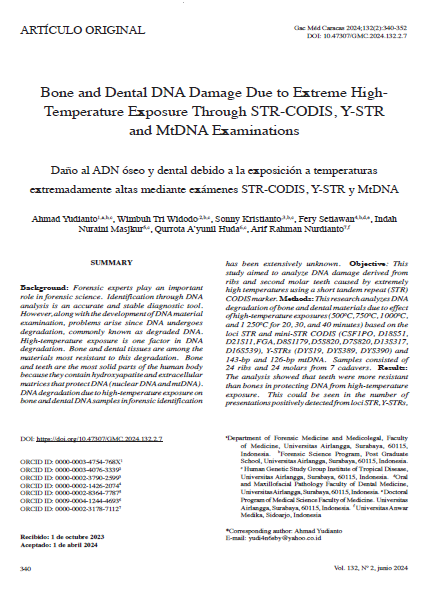Bone and Dental DNA Damage Due to Extreme High-Temperature Exposure Through STR-CODIS, Y-STR and MtDNA Examinations
Contenido principal del artículo
Resumen
Background: Forensic experts play an important role in forensic science. Identification through DNA analysis is an accurate and stable diagnostic tool. However, along with the development of DNA material examination, problems arise since DNA undergoes degradation, commonly known as degraded DNA. High-temperature exposure is one factor in DNA degradation. Bone and dental tissues are among the materials most resistant to this degradation. Bone and teeth are the most solid parts of the human body because they contain hydroxyapatite and extracellular matrices that protect DNA (nuclear DNA and mtDNA). DNA degradation due to high-temperature exposure on bone and dental DNA samples in forensic identification has been extensively unknown.
Descargas
Detalles del artículo

Esta obra está bajo una licencia internacional Creative Commons Atribución-NoComercial 4.0.
